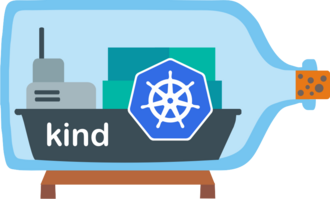
Introduction
Software today needs to run across laptops, servers, and cloud providers. Traditionally, this created headaches: applications would fail in one environment but run fine in another. Containerization solves this by bundling everything your app needs--code, dependencies, libraries, and runtime--into a portable unit called a container.
In this guide, we'll explore what containers are, how Docker and Kubernetes fit in, the differences between them, and what other players are shaping this space.
What Are Containers?
A container is a lightweight, standalone package of software. Unlike virtual machines, which require a full guest operating system, containers share the host system's kernel. This makes them faster, smaller, and more efficient.
- Virtual Machine analogy: Renting an entire apartment building for one tenant.
- Container analogy: Renting an apartment inside a building--sharing walls and infrastructure with others while still having your own space.
Containers are portable, consistent, and scalable--making them a foundation of modern cloud computing.
What is Docker?
Docker is the most popular tool for building and running containers. It provides:
- Docker Engine - runs and manages containers.
- Docker Images - blueprints for creating containers.
- Docker Hub - a registry where you can share and download images.
Docker makes it simple to package your application into a container and run it anywhere--on your laptop, a server, or the cloud.
Analogy: Docker is the tool that helps you build, package, and carry your lunchbox (container).
What is Kubernetes?
While Docker focuses on creating and running containers, it doesn't help much when you need to run hundreds or thousands of containers across multiple servers.
That's where Kubernetes comes in. Kubernetes (or K8s) is an orchestration system that manages clusters of containers.
- Scheduling: Decides where containers should run.
- Scaling: Adds or removes containers depending on demand.
- Self-Healing: Restarts containers that fail automatically.
- Load Balancing: Routes traffic to the right container.
- Service Discovery: Lets containers talk to each other easily.
Analogy: If Docker is your lunchbox, Kubernetes is the cafeteria manager ensuring everyone gets their meal on time and in the right place.
Key Differences: Docker vs Kubernetes
| Feature | Docker | Kubernetes |
|---|---|---|
| Purpose | Build and run individual containers | Orchestrate and manage container clusters |
| Scope | Single host or small-scale deployments | Large-scale, distributed systems |
| Focus | Packaging and portability | Reliability, scaling, automation |
| Learning Curve | Easier for beginners | Steeper, requires understanding of clusters |
| Use Case | Develop and test apps locally | Deploy and scale apps in production |
How It Works Together
It's important to note: Docker and Kubernetes are not competitors--they complement each other.
- Docker builds and runs the container.
- Kubernetes orchestrates many containers across servers.
- Together, they form a powerful system for modern applications.
Example: A company may build containers with Docker and then use Kubernetes to manage those containers across hundreds of servers worldwide.
Other Players in the Container Space
While Docker and Kubernetes dominate, they aren't the only options.
- Podman - a daemonless container engine, often seen as a Docker alternative.
- CRI-O - lightweight runtime for Kubernetes, optimized for simplicity.
- containerd - an industry-standard container runtime used under the hood by Docker and Kubernetes.
- Amazon ECS/Fargate - AWS's container orchestration platforms (Fargate is serverless).
- OpenShift - Red Hat's enterprise Kubernetes platform with developer-friendly tools.
- Nomad (by HashiCorp) - a flexible orchestrator for containers and non-container workloads.
Why Should You Care?
- Consistency: Code runs the same everywhere.
- Portability: Containers can move across clouds and servers.
- Scalability: Kubernetes makes it easy to handle growth.
- Industry Standard: These tools are now the backbone of modern DevOps practices.
Conclusion
Docker and Kubernetes are transforming software deployment. Docker simplifies packaging apps, while Kubernetes ensures they run smoothly at scale. Understanding both--and the wider ecosystem--will give you powerful skills for the future of tech.
Ready to dive deeper? Check out our advanced section
Next Step for You:
- Install Docker and run a simple container.
- Explore Kubernetes with minikube or Docker Desktop.
- Compare Docker with Podman or ECS to see how the ecosystem fits together.